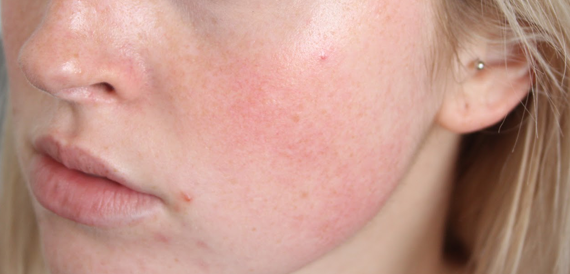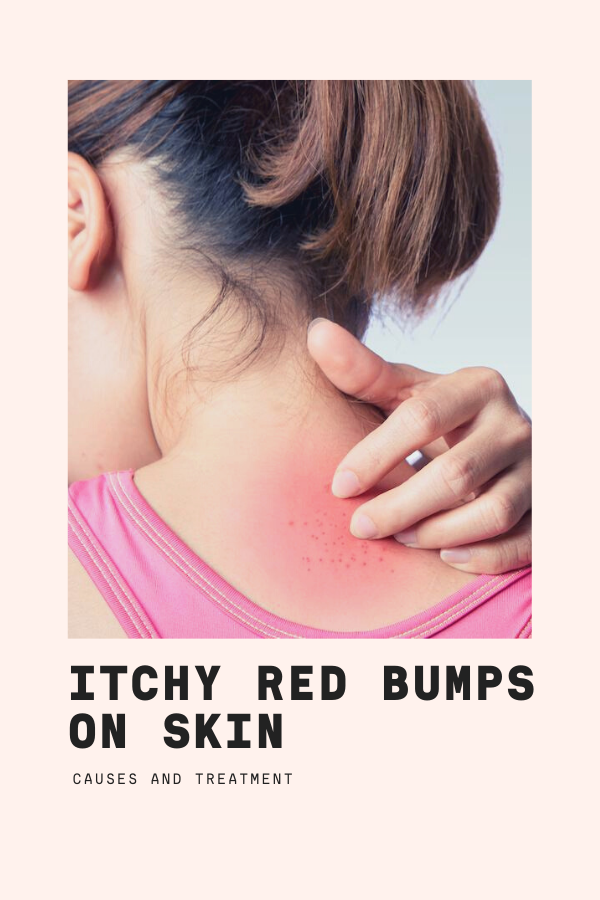
Somehow super itchy, red and raised bumps (commonly called rashes) on your skin (“once flawless”) have appeared and you want to know what it is. You are racking your mind to figure out how these rashes or blotches have got there. Is it some kind of warning, should you be worried?
We all know that itchy bumps are very distracting, annoying and irritating. However, the silver lining is that if you know what kind of these bumps are, then they can be easily treated. In this article, we will help you identify the most common causes of itchy red bumps on the skin.
Unless you have been walking barefoot through poison ivy, you will need to do some research, and maybe a physician to solve the puzzle and find out the answer.
You can narrow down the possibilities by considering a few things. Essentially, most rashes fall into the below mentioned categories:
· Localized rashes caused by fungal or bacterial infection
· Localized or widespread bumps that are caused by an allergic reaction to some sort of virus or medication
· Localized rashes that are caused by direct contact with an allergen or irritant
To know the bump or rash type, pay heed to what it looks like and what you were exposed to like potential allergens/ irritants or any new medications. Now compare that information with descriptions of some common itchy rashes:
Ringworm – Opposed to its name, there are no worms involved. This rash is caused by fungal infection and it looks like an expanding ring that grows outward.
Medicine rash – In case, itchy red bumps appears after you have just begun taking a new antibiotic, diuretic or anti-seizure medication, you may have a medicine-related rash. The rash begins out as little red blotches that rapidly spread to cover large areas of skin.
Heat rash – Small bumps or splotches that either seem like blisters or fluid-filled can be an outcome of heat rash, especially in case you have been out in the sun, been sweating or wore tight clothes.
Swimmer’s itch – In case, you have been swimming in not-so clean water, then you may have swimmer’s itch – it is placid rash of itchy red splotches caused by parasites.
Hives – These sizeable bumps crop us rapidly and look like pimples. They caused by exposure to an allergen or something unknown.
Intertrigo – In case, you have bright red rash in moist areas; particularly where your skin rubs together like behind the knees or under the armpits, you may have Intertrigo.
Beat the Heat Before it Gets Too Hot in Here |
|
There are several types of heat-related rashes one can get, one of which causes bumps that are fluid-filled (pus), but do not hurt and another that stings. Though Intertrigo is classified separate from heat rash, it is usually caused or worsens by heat. To prevent heat-related red bumps, try to keep your skin reasonably clean and cool. |
While the afore-stated rashes are quiet common, there are some that are even more so. Read on to know about them:
Shingles: If you ever had been through the chicken pox phase, they you may get shingles. Once you get chicken-pox, the bacteria dwells in your body and can turn active later in life, resulting in shingles. The rash not just forms itchy red bumps on skin, but it also affects the nerves causing you pain. A person usually recovers in 3-4 weeks, although you may feel pain even after the bumps have disappeared.
Pityriasis rosea: Also called the Christmas tree rash, rosea generally starts at one spot and then spreads outwards (just like Christmas tree).
Dermatitis: There are several kinds of dermatitis, an inflammation of skin.
· Atopic dermatitis is a reoccurring state, thus you will relatively in advance if you have this kind of rash. Your skin will be inflamed and itchy, especially in folds of skin like the knees, neck and elbows.
· Contact dermatitis is itchy red bumps on skin caused from an irritating source (irritant contact dermatitis) or blisters from an allergen (allergic contact dermatitis). Poison oak or poison ivy are examples of allergic contact dermatitis.
Know the causes of Itchy Red Bumps
· Virus – Measles, roseola and chicken pox are all examples of skin bumps caused by virus
· Bacteria – Intertrigo is an example of rash caused by bacteria
· Fungus – Ring worm and athlete’s foot are examples of skin bumps caused by fungus.
Treatments of Itchy Red Bumps
Self-Help – At home-treatments can clear most of itchy red bumps on the skin. Conditions like Intertrigo can go away on its own – provided you practice good hygiene and avoid tight clothes.
· Avoid triggers – If you can find out what is caused the rash – a bathing soap, beauty product, laundry detergent or exposure to an irritant such as poison ivy – you must avoid it and let you skin heal.
· Keep the rash moist – A rich, fragrance-free skin moisturizer like Aquaphor, Vanicream and Eucerin can aid keep the itchy, red bumpy area soft.
· Do not Scratch – Scratching injures your skin and worsens the infected the area and prone it to infection. In case, the itching cannot be avoided, Try hydrocortisone cream or anti-itch gel to provide you some relief from the itchy bumps.
· Take antihistamine – A lot of allergy medications – from Allerga to Zyrtec can aid stop the itch and speed-up the healing process. They can even make hive fade completely.
When to visit a Doctor?
If home treatments do not help you to get rid of red itchy bumps on skin, it may be the time to visit the skin-care doctor for a more potent treatment. The doctor may prescribe:
Antifungal or antibiotics – For infections such as folliculitis, your skin-specialist may prescribe a topical or oral antifungal or antibiotic medication that can heal the rash.
Corticosteriods – You skin doctor may prescribe steroid creams like hydrocortisone that are strong as compared to other over-the-counter creams to aid stop the itch and hasten the recovery.
Is Your Rash Contagious? |
|
Rashes on skin look fairly scruffy, especially if you have itchy red bumps on skin that are oozing sores. With all that scary-appearing skin, you may think if rashes are contagious. In reality, it chiefly depends on the type of rash or skin bumps you have. Some skin bumps look very bad, like severe cases of Intertrigo and shingles, but they are not contagious at all. On the contrary, ringworm, which most of the times is small and innocent-looking patch is extremely contagious. Your doctor will tell you if your skin bumps are contagious and the measures you must take to prevent it from spreading. |
Enjoyed Itchy Red Bumps on Skin – Causes and Treatment? Share it with your friends so they too can follow the Superfoodsliving journey.
Share on Pinterest
